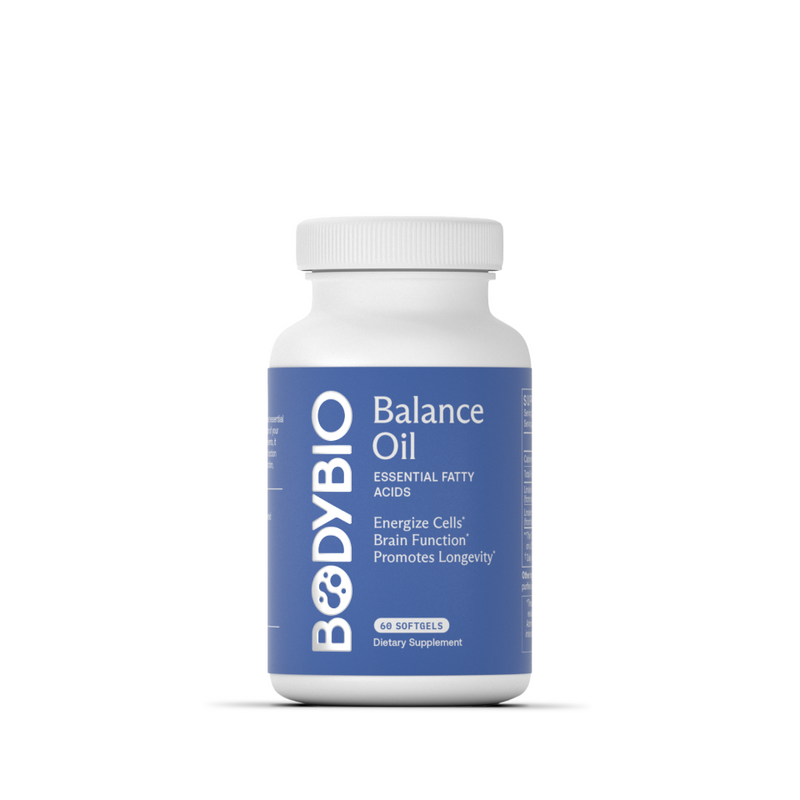Reboot Your Cells: Understanding Cell Danger Response & Mitochondrial Dysfunction

Key Takeaways:
Key Points:
- Our cells are wired for survival. When threatened by an external trigger, such as biotoxins, our bodies start a multi-step process called the Cell Danger Response. This response is meant to “reboot” cells and restore health.
- Without a healthy immune response and a steady supply of nutrients, the Cell Danger Response can get “stuck” in one of three stages. If this happens, our cells are left unprotected, eventually leading to mitochondrial dysfunction.
- One way to improve the Cell Danger Response process is to nourish the mitochondria with lifestyle changes, phospholipids, fatty acids, and more.
The internet boasts dozens of quick-fix detox supplements to help you recover from a chronic illness.
But one thing that’s overlooked by many in the functional medicine community may actually be the reason you’re not getting better.
It’s the Cell Danger Response (and, by extension, mitochondrial dysfunction).
You can make all the big lifestyle changes.
You can empty your wallet by buying the best detox supplements.
You can even spend your free time resetting your nervous system.
But without getting to the core of the issue — cellular health — defeating a chronic illness becomes extremely difficult.
Let’s explore the three stages of the Cell Danger Response, how they relate to mitochondrial dysfunction, and how you can harness your cells for real, lasting health.
Table of Contents:
- What Is the Cell Danger Response?
- Cell Danger Response Stages
- What is Mitochondrial Dysfunction?
- Symptoms of Mitochondrial Dysfunction
- Mitochondrial Dysfunction Support
- Target Cellular Stress with PC + Balance Oil
What Is the Cell Danger Response?
The Cell Danger Response (or CDR) is usually a normal and healthy process. When our bodies are threatened, this method is used to conserve energy, fight chronic illness, and help us return to homeostasis. It all happens in three stages.
And that’s where it gets tricky. A healthy body should progress through all three stages after facing a threat. But if the body gets stuck in stage one or two, then the Cell Danger Response could further exacerbate chronic illness (even if it’s not the initial root cause).
Cell Danger Response: Stages of the Healing Cycle
The Cell Danger Response occurs after we face a physical, biological, or chemical threat (like pollution, mycotoxins, or trauma).
Though uncomfortable, the three stages of the Cell Danger Response are meant to take our bodies back to full health. But if our cells get stuck without progressing to the next stage, this becomes a problem.
Cell Danger Response Stage 1 - CDR1
During stage one, your innate immune system responds to the threat. This causes endangered cells to lose their connection to healthy cells. Think of it as a whole body “shut down.” This cell signal interruption isn’t harmful in the short term. In fact, it’s used to help avoid toxins spreading throughout the body.
As the cells begin to lose connection, the mitochondria step in with an inflammatory response (contrary to their usual anti-inflammatory role).
The cells are put on defense, working to contain the damage, and oxygen levels drop. As a result, ATP production changes, downregulating it to protect the body from additional damage.
Cell Danger Response Stage 2 - CDR2
Once the environmental threat has been recognized, contained, and eliminated, the cells progress to stage two. Stage two is also known as the proliferative stage because it has the difficult job of restoring damaged cells. During this stage, the stem cells step in—activating a process called “aerobic glycolysis,” which assists in cell growth across the body.
The cellular connection still needs to be restored, though. This can occur once damaged cells are fully functional and in their right place.
Cell Danger Response Stage 3 - CDR3
As your cells move to stage three, their primary job is to restore the connection lost in stage one. They’ll work to reconnect with systems in your body (like the lymphatic system or nervous system) and restore their role in metabolic and organ health. Regular oxygen levels and ATP levels are restored here. Inflammation levels and immune system responses should return to normal.
However, depending on a person’s genotype and character, developmental timing, and magnitude and frequency of exposure, a dysfunctional CDR can persist and turn into a chronic disease (i.e., autoimmune, PTSD, etc). This is when we run into real trouble.
Exploring Mitochondrial Dysfunction
Speaking of cellular health, the mitochondria are a close partner when it comes to each stage of Cellular Danger Response.
As the powerhouse of the cell, the job of mitochondria is to power the cell with energy, generating ATP.
But when your body gets “stuck” in one of the stages of the Cellular Danger Response, the mitochondria become overtaxed. Here’s what can happen:
- ATP production downgrades
- Fluid levels in the cell take a hit
- The cell membrane is compromised
- Cell signaling changes
- May alter the functions of tissues and organ systems
…All as your mitochondria prioritize survival.
Mitochondrial Dysfunction & Cell Danger Response: Are They Related?
During the Cell Danger Response, signaling between mitochondria is lost or impaired. This means that almost every organ, function, and system in your body could be compromised.
Remember, the Cell Danger Response is meant to “lockdown” your system and prioritize survival. But your body isn’t supposed to stay there.
Finding ways to support your mitochondria helps to move along the Cell Danger Response — supporting your body in its natural process while lowering the chance of long-term illness.
Symptoms of Mitochondrial Dysfunction
If you suspect mitochondrial dysfunction as the result of the Cellular Danger Response or a chronic illness, here are some symptoms and issues to watch out for:
- Inflammation
- Low energy or chronic fatigue
- Early signs of aging
- Cardiovascular disease
- Poor blood sugar regulation
- Mental illness and depression
- Limb tingling
- Asthma
- Chronic infections
- Neuropathic pain
- Autoimmune disease
Mitochondrial Dysfunction Support
Once you identify mitochondrial dysfunction as a problem, you can work toward restoring your cell’s powerhouse. The goal is to get your cells back to function and fluidity. Here are some tools you can use:
- Antioxidants — Glutathione, in particular, is a powerful dose of antioxidants to help scavenge free radicals in the cell.*
- Phospholipids — These work to repair damaged cell membranes and improve mitochondrial function.* During the early part of CDR, cell fluidity changes to limit the egress of pathogens/toxins into the cell. Again, this is a protective mechanism, but causes major changes to cell function. Supplementation with phospholipids helps to reverse this and allow for proper cell function.* Furthermore, phospholipids help to control the innate immune response, support tissues/organs for proper function, re-establish cell-to-cell communication, mend cellular “rifts” or damage, and most importantly, target DNA regulation to control epigenetic changes.*
- Vitamin D — Spend more time in the sun to target oxidative stress. Vitamin D metabolism may be weakened during CDR.
- Reduced Electromagnetic Field (EMF) exposure — While EMFs may not cause a chronic illness, they create extra stress for the mitochondria and can exacerbate symptoms in sensitive individuals.
- Red light therapy — Just a few minutes in red light has been shown to increase ATP production, reduce oxidative stress, and boost antioxidant metabolism.
- Methylated vitamin B — Methylation may be compromised during CDR to prevent “hijacking” of pathogens like viruses that may replicate within the cell. To avoid this, the mitochondria shut methylation down as a precaution. Although vitamin B stores may be used to combat oxidative stress, a methylated B complex should be supplemented carefully during the early part of CDR.*
- Fatty acids — A healthy balance of pure omega-3 and omega-6 essential fatty acids targets cell structure and supports a healthy inflammatory response.*
- Target nutrient deficiencies — The cells need ample nutrients, particularly minerals, electrolytes, and phospholipids, for optimal performance.
- Butyrate — Butyrate, a short-chain fatty acid, plays a vital role in managing mitochondrial stress.* Butyrate helps to enhance mitochondrial function during oxidative stress.* Butyrate can influence the immune response by affecting immune cell migration, adhesion, and cellular functions such as proliferation and apoptosis — which occur in CDR1 and 2 phases of the healing cycle.*
While these are essential resources for cellular wellness, it’s important to address any toxin or root cause of CDR in your environment, too. Binders may be needed to mop up excess toxins such as endotoxin and mold toxins to avoid further triggering of the immune system, as is the case with a condition known as Mast Cell Activation Syndrome (MCAS).
Target Cellular Stress with Balance Oil
At BodyBio, cellular health is our #1 priority. The team here has spent years researching the best ways to counteract mitochondrial dysfunction and the Cell Danger Response — so we can provide the best supplements to overcome even the trickiest chronic diseases.
One of my favorite tools for cellular health is combining BodyBio PC with Balance Oil. With the perfect ratio of omega-3 to omega-6, this supplement targets cell structure and mitochondrial health. It’s a must-have for your journey out of the Cell Danger Response, and into restored wellness.
Naviaux R. K. (2020). Perspective: Cell danger response Biology -The new science that connects environmental health with mitochondria and the rising tide of chronic illness. Mitochondrion, 51, 40–45. https://doi.org/10.1016/j.mito.2019.12.005
Antoni, L., Nuding, S., Wehkamp, J., & Stange, E. F. (2014). Intestinal barrier in inflammatory bowel disease. World journal of gastroenterology, 20(5), 1165–1179. https://doi.org/10.3748/wjg.v20.i5.1165
Pizzorno J. (2014). Mitochondria-Fundamental to Life and Health. Integrative medicine (Encinitas, Calif.), 13(2), 8–15.
Naviaux R. K. (2019). Metabolic features and regulation of the healing cycle-A new model for chronic disease pathogenesis and treatment. Mitochondrion, 46, 278–297. https://doi.org/10.1016/j.mito.2018.08.001
Naviaux R. K. (2019). Incomplete Healing as a Cause of Aging: The Role of Mitochondria and the Cell Danger Response. Biology, 8(2), 27. https://doi.org/10.3390/biology8020027
Santini, S. J., Cordone, V., Falone, S., Mijit, M., Tatone, C., Amicarelli, F., & Di Emidio, G. (2018). Role of Mitochondria in the Oxidative Stress Induced by Electromagnetic Fields: Focus on Reproductive Systems. Oxidative medicine and cellular longevity, 2018, 5076271. https://doi.org/10.1155/2018/5076271
Begum, R., Calaza, K., Kam, J. H., Salt, T. E., Hogg, C., & Jeffery, G. (2015). Near-infrared light increases ATP, extends lifespan and improves mobility in aged Drosophila melanogaster. Biology letters, 11(3), 20150073. https://doi.org/10.1098/rsbl.2015.0073



